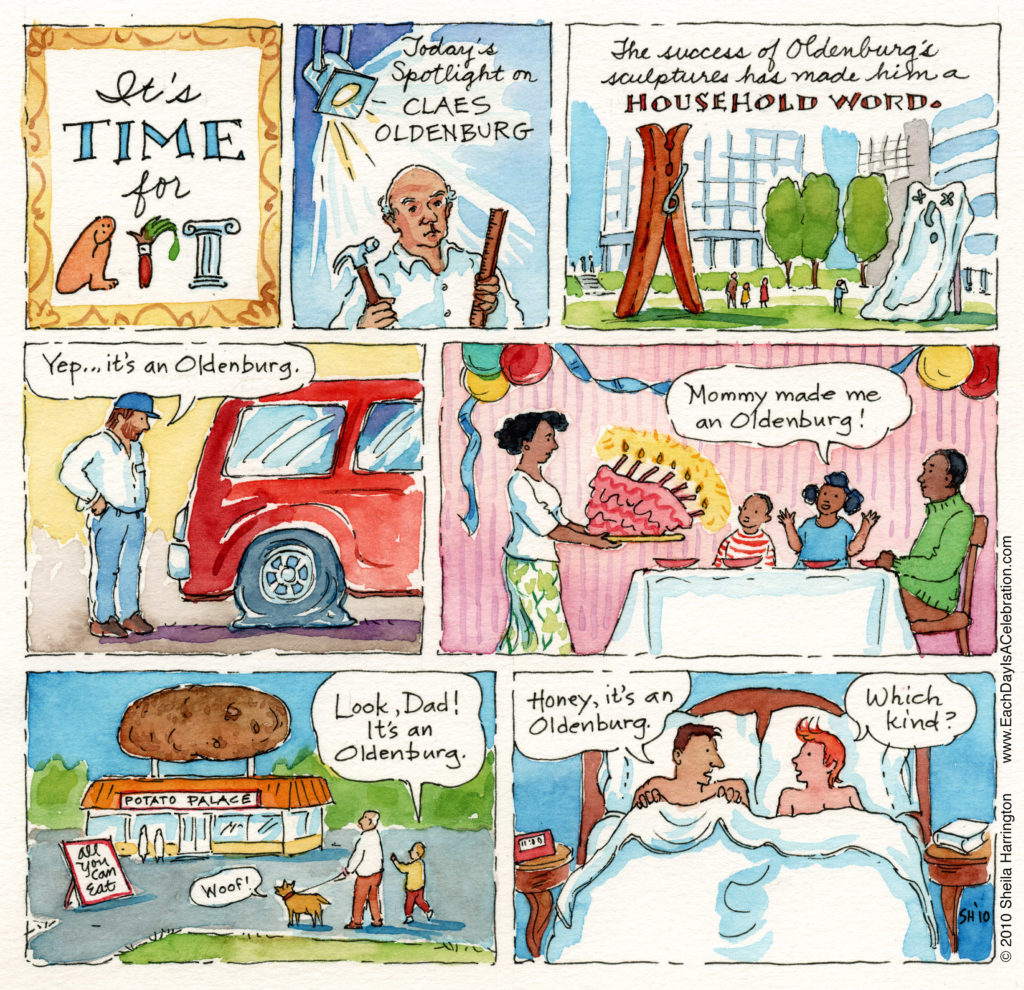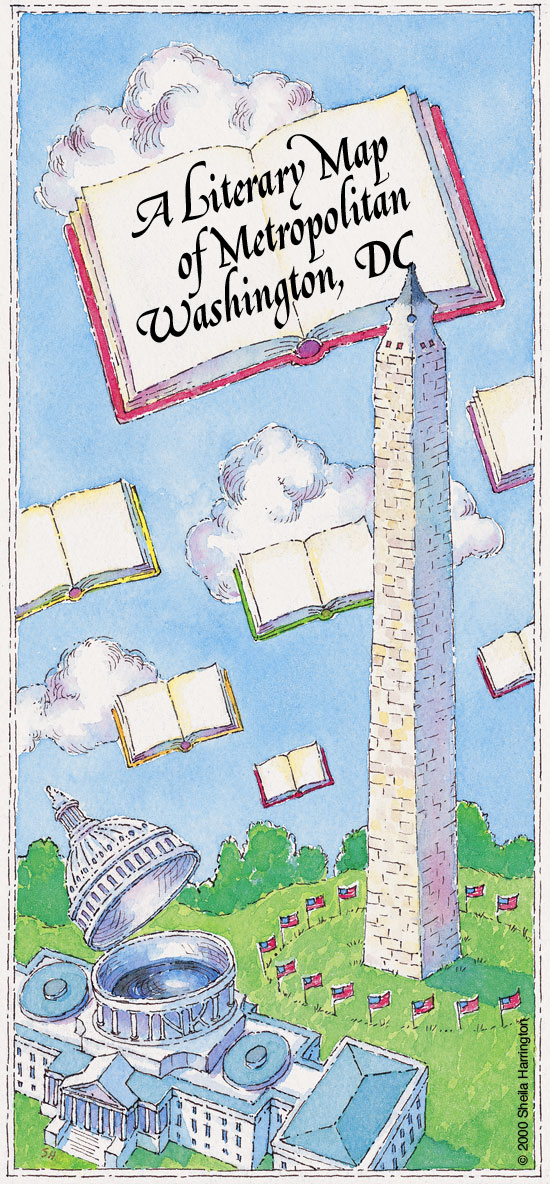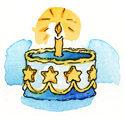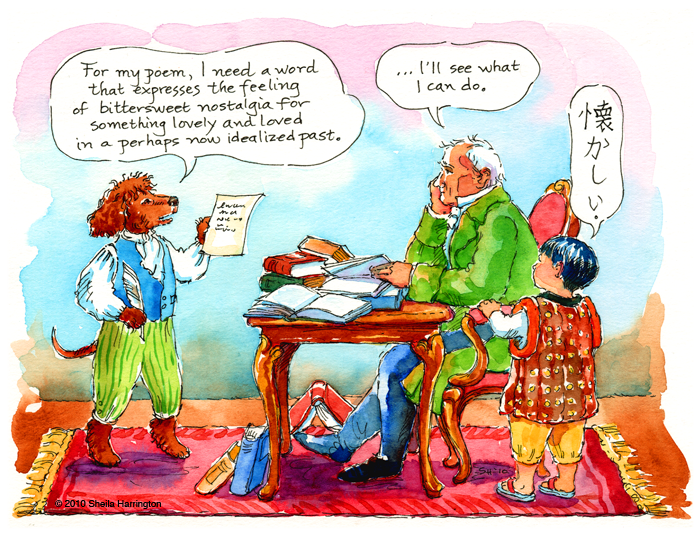
Tag: Words
Language Lover
Here’s the answer to a question that has probably been puzzling you for some time. What do the Sphinx and the sphincter have in common? Well, they share a root in the Greek verb sphingein, to squeeze. The Sphinx, if you recall, punished those unable to solve its riddles by strangling—squeezing the air out of them. And if you’ve ever been eight months pregnant, desperately searching for the nearest ladies’ restroom, you’ve done a little squeezing yourself.
This post is in honor of Roy Blount, Jr., whose birthday it is today, and thanks to whom I discovered this etymological nugget. I first became acquainted with Roy Blount, Jr. through listening to NPR’s “Wait Wait, Don’t Tell Me,” a humorous and intelligent Saturday morning current-events quiz show to which I am sufficiently addicted to plan my weekend cooking blitz for its time slot. Blount is one of the participants, and I said to myself, “Who is this smart, funny man with the sexy, crumbly, Southern-accented voice?” and I immediately added him to the list of Guys I Admire, which includes my husband and son (at the top, naturally), Gregor Mendel, and Hektor, hero of Troy, among others.
Blount was actually born in Indiana, so he must have picked up his Southern accent in high school in Georgia. Besides the vast amount of work he does for radio and numerous periodicals, he’s written plays, screenplays, and song lyrics, and is the author of many works of fiction and non-fiction about (to name a few subjects) sports, politics, gender relations, domestic animals, poetry, and hair. The first book of his I opened was Alphabet Juice, a book hard to describe but a must-have for the bookshelf of any language-lover. Therein Blount explores from A to Zyzzyva (a class of weevils) words that intrigue, excite, or annoy him, contemplating in the process multiple dictionaries, Indo-European roots, and popular culture. Happy Birthday, Roy! How’s this for a birthday present: a “roy blount” as a meme for “curious word or phrase worthy of investigation.”
Answer: A cow.
Washington’s Monument
Today is the 125th anniversary of the dedication (in 1885) of the Washington Monument. It was certainly a long time a-building, considering Pierre Charles L’Enfant had included a location for a monument to George Washington in his 1791 drawings for the new capital city. What L’Enfant had in mind, though, was an equestrian statue.
After Washington died in 1799, Congress thought a tomb might be a better plan—hey, how about right inside the Capitol? But his wife Martha wasn’t too happy with that idea. Progress stalled until the 1830s, when a group of impatient citizens raised funds themselves and held a competition for a monument design. The other entries were far more complicated: designs for monuments rich in Gothic windows, enlivened by multicolored stonework, festooned with all manner of carving and statuary. It makes me wonder how much the final choice was driven by budget. Even the award-winning design by Robert Mills originally had a colonnade at the base.
Construction began at last in 1848 and continued in fits and starts, slowed by the Civil War, lack of money, and anti-Catholic fervor (don’t ask). Congress occasionally offered funds. Reading American history I am struck by how reluctant the U.S. government used to be to spend money on much of anything, no matter the generally acknowledged need or value. When Congress finally decided to fund the rest, the monument went up quickly and immediately began to draw crowds. According to the National Park Service, it has over 800,000 visitors a year and is still the TALLEST STONE STRUCTURE in the WORLD. How about that.
You may be asking, “What the heck does this have to do with a picture of a Monument-Pen?” Well, uh… this image is the cover of a Literary Map of Washington DC commissioned by the Women’s National Book Association and featuring writers who have lived and worked here. For February 21st, I searched my work for a Monument image. And thereby hangs the tale. (Later this month I will post the illustrated map inside, so you can see what it looks like. It’s available at DC bookshops or through the WNBA.)
There is a celebration of the anniversary at 1pm today at the foot of the Monument.
It’s an Oldenburg

Today is the birthday of Claes Oldenburg (born 1929 in Stockholm, Sweden), whose sculptures depicting soft versions of normally solid objects (like bathtubs and violins) and gigantic versions of small household objects (like lipstick and ice cream cones) have been critically successful as well as extremely popular and are installed in public spaces around the world. Some, like his giant clothespin and typewriter eraser, have also with the passage of time become mementos of a dimly remembered disappearing technology. His works elevate the pedestrian to the extraordinary and are lots of fun besides. Here’s wishing him a great big slice of birthday cake.
Man of Many Words
Today is the birthday of Peter Mark Roget (1779-1869), scientific writer, lecturer, and author of the Thesaurus, a project that he did not even begin to pursue seriously until his 70s. That ought to encourage the rest of us slowpokes. Roget was a lifelong and compulsive list-maker, a practice that apparently comforted him and helped sustain him through the terrible depressions that plagued him and his extended family, although he suffered tragedy enough throughout his life to justify serious despair. I love my Thesaurus and was inspired by this birthday to get on the library waiting list (speaking of lists) for a recent biography of Roget, Joshua Kendall’s The Man Who Made Lists. Among Roget’s many other admirers is J.M. Barrie:
“The night nursery of the Darling family, which is the scene of our opening Act, is at the top of a rather depressed street in Bloomsbury. We have a right to place it where we will, and the reason Bloomsbury is chosen is that Mr. Roget once lived there. So did we in days when his Thesaurus was our only companion in London; and we whom he has helped to wend our way through life have always wanted to pay him a little compliment. The Darlings therefore lived in Bloomsbury.” —Introduction to Act I of Peter Pan
Natsukashii: A Japanese word used to express the feeling described above. It is not yet in the Thesaurus.







